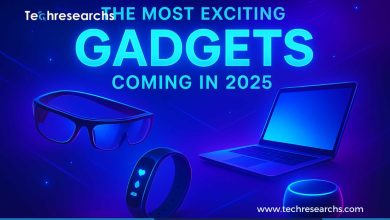What Makes Aditya L1 & Proba-3’s Solar Observations Unique?

Solar observations have always been critical for understanding the Sun’s impact on Earth and the broader solar system. In 2025, two groundbreaking missions—India’s Aditya L1 and Europe’s Proba-3—will join forces to revolutionize how we study the Sun. These missions aim to unlock new solar secrets, enhance space weather predictions, and deepen our understanding of solar dynamics. But what sets their joint solar observations apart from previous efforts? This article explores their unique contributions and why this collaboration matters.
The Role of Solar Observations
Solar observations help scientists monitor the Sun’s activity and its influence on the Earth’s environment. They enable us to:
- Predict solar flares and coronal mass ejections (CMEs).
- Understand space weather impacts on satellites, astronauts, and power grids.
- Study the Sun’s role in climate and atmospheric changes on Earth.
With advanced technology and collaborative missions like Aditya L1 and Proba-3, solar observations are poised to achieve unprecedented breakthroughs.
What Is Aditya L1?
Aditya L1, India’s first dedicated solar mission, is designed to study the Sun from the first Lagrange point (L1), a vantage point about 1.5 million kilometers from Earth.
Key Features of Aditya L1:
- Focus on the Corona: Aditya L1 specializes in observing the solar corona, the Sun’s outermost layer, where temperatures exceed a million degrees Kelvin.
- Payloads: It carries seven advanced payloads, including a coronagraph and magnetometer, to study magnetic fields, solar wind, and energetic particles.
- Continuous Observation: Positioned at L1, the spacecraft will enjoy an unobstructed view of the Sun, ensuring continuous data collection.
By analyzing these features, Aditya L1 aims to unravel the mysteries of solar storms and their impact on space weather.
What Is Proba-3?
Proba-3, a European Space Agency (ESA) mission, is a technological marvel designed to demonstrate precise formation flying. It consists of two satellites flying in tandem to create a massive, high-precision coronagraph.
Key Features of Proba-3:
- Formation Flying: Proba-3’s satellites will maintain a 150-meter separation to block sunlight perfectly, allowing for detailed imaging of the corona.
- Coronagraphic Observations: It will observe faint solar phenomena like coronal streamers and polar plumes.
- Engineering Focus: The mission tests advanced technologies in autonomous spacecraft operation and formation flying.
These features make Proba-3 an essential companion to Aditya L1 for detailed solar observations.
How Are Aditya L1 and Proba-3 Collaborating?
Aditya L1 and Proba-3 complement each other’s strengths to provide a holistic view of solar activity.
Key Collaboration Goals:
- Enhanced Solar Corona Studies: While Aditya L1 provides a broad observational range, Proba-3 focuses on high-resolution imaging, offering complementary insights.
- Space Weather Prediction: Data from both missions will refine models predicting the Sun’s impact on Earth.
- Global Scientific Cooperation: This partnership demonstrates how international collaboration accelerates space research.
Unique Aspects of Their Solar Observations
1. Advanced Instrumentation
Both missions bring cutting-edge instruments to the table. Aditya L1’s magnetometer and UV imaging spectrograph pair seamlessly with Proba-3’s coronagraphic capabilities to capture detailed and continuous solar data.
2. Precise Formation Flying
Proba-3’s technology enables it to maintain a steady alignment for unparalleled solar imaging. This precision complements Aditya L1’s continuous solar monitoring from the L1 point.
3. Multidimensional Data Collection
With Aditya L1 observing magnetic field dynamics and Proba-3 imaging faint solar structures, researchers gain a multidimensional perspective of solar activity.
Impacts on Science and Society
Improved Space Weather Forecasting
Together, Aditya L1 and Proba-3 will improve the accuracy of space weather predictions. This is crucial for protecting satellites, power grids, and communication systems from solar storms.
Advances in Solar Physics
The collaboration will deepen our understanding of solar dynamics, such as coronal heating and magnetic field interactions.
Technological Innovations
Proba-3’s formation flying techniques and Aditya L1’s payload designs set new benchmarks for future space missions.
Challenges and Overcoming Them
1. Mission Coordination
Operating two missions simultaneously requires meticulous planning and real-time coordination. Collaborative efforts between the Indian Space Research Organization (ISRO) and ESA address these challenges.
2. Data Integration
Integrating data from different instruments and missions is complex. Advanced AI-driven models will help synthesize the information.
3. Space Environment Risks
The missions face potential risks from cosmic radiation and micrometeoroids. Protective measures and redundant systems ensure mission success.
Looking Ahead: What to Expect in 2025
By 2025, Aditya L1 and Proba-3 will begin their joint solar observations. Scientists anticipate groundbreaking discoveries, including:
- A clearer understanding of solar eruptions and their origins.
- Detailed imaging of the solar corona’s faint structures.
- Better models predicting solar weather and its effects on Earth.
The collaboration between Aditya L1 and Proba-3 marks a significant milestone in solar research. Their joint efforts promise to redefine our understanding of the Sun and its influence on the solar system. With cutting-edge technology and global cooperation, these missions set the stage for a new era of space exploration.
Stay tuned for more updates on Aditya L1 and Proba-3’s missions. Follow our blog for the latest developments in space science and solar observations!



